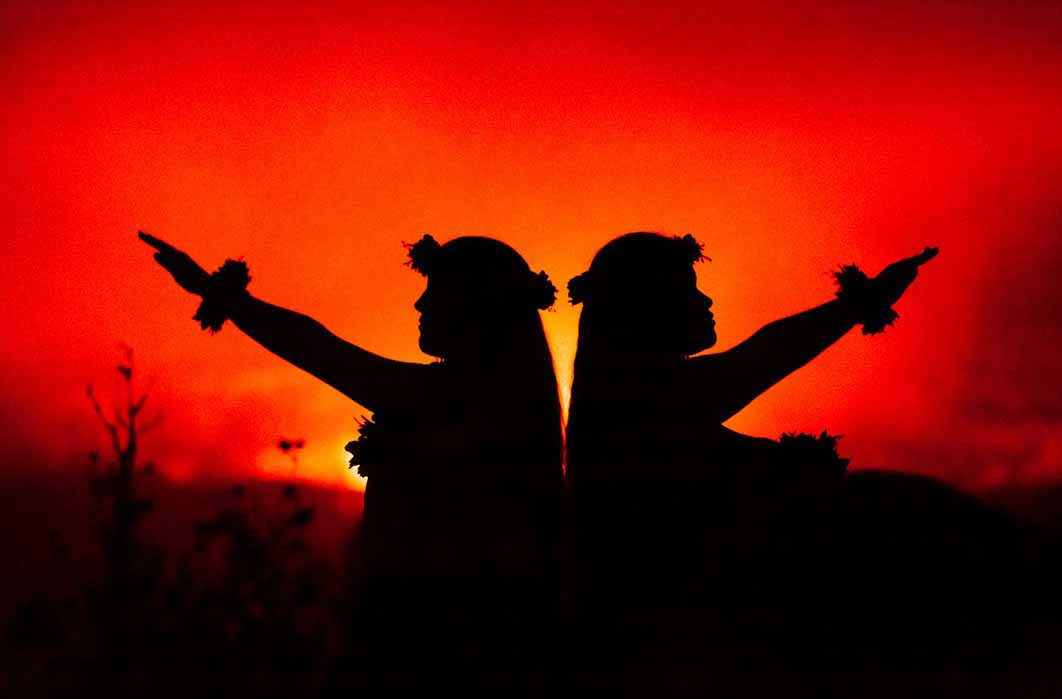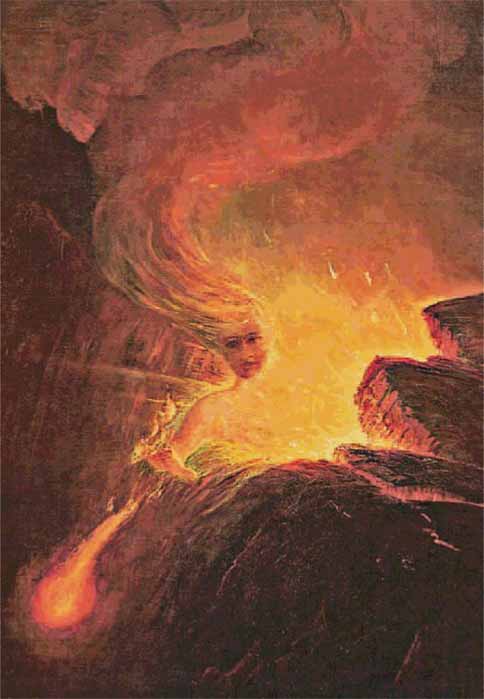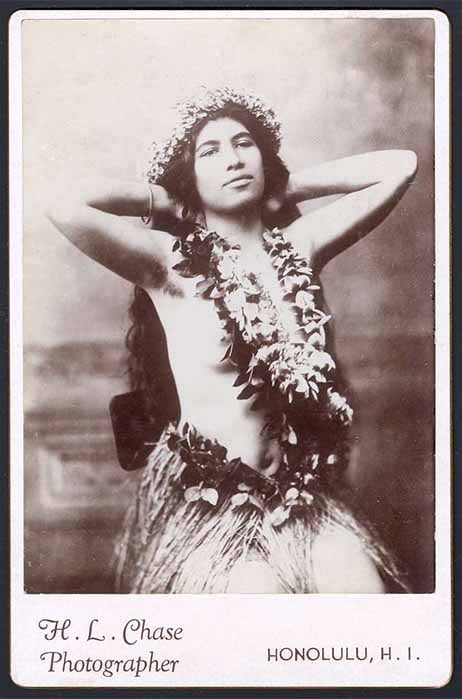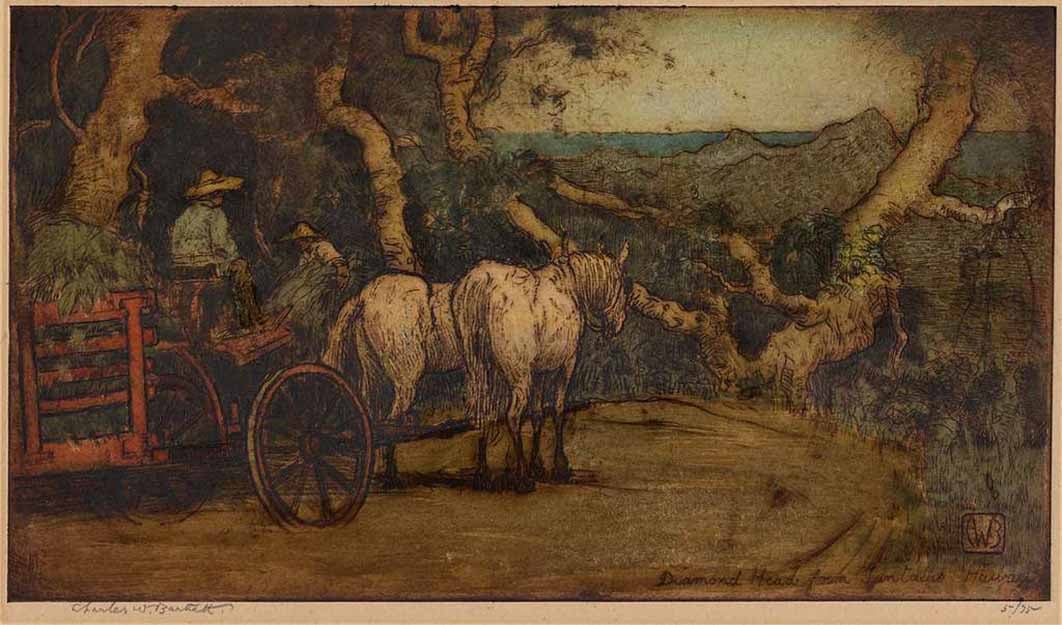
Returning Volcanic Rocks Of Pele, Ancient Fire Goddess Of Hawaii
Creation in action. That is how one Hawaiian resident describes the goddess Pele’s movement. The earth’s red blood issuing into the sky, creating new landmasses and changing the planet itself, washing it anew. It is at once a process of renewal and purification, and from the beginning of time, her force has been, and always will be, unstoppable. Her home is at Halemaumau Crater, Wahi Kapu o Pele (The Sacred Home of Pele) in the Hawaii Volcanoes National Park, although her influence spreads worldwide. Also referred to as Pelehonuamea, “She who shapes the Sacred Land,” believers in her presence hold her in awe. And even those who do not believe such a goddess resides on Hawaii’s main island still behold the volcano’s beauty and creative and destructive forces with reverence.

Pele by David Howard Hitchcock (c. 1929) (Public Domain)
Testimonials to Pele
The last major eruption occurred in 1932, but Pele is constantly in motion and there are many smaller eruptions that are generally not reported outside of Hawaii. The main island itself has few cities, and even those cities would be better classified as towns by outsiders. In a recent interview, one Hawaiian resident describes what had occurred to him during a little-reported minor eruption several decades ago. His home is just outside of Hilo, between that hub city and Hakalau. “I was sitting on the porch when I first felt it. The ground started to tremble, and that is when I knew she was angry. About a mile away from our place I saw a fissure burst and lava extended what looked like a mile high into the sky and threw rocks and debris all over. Then I saw the flow start toward the house, eating everything in its path. The fumes killed animals and insects, and the nearby grasses and then bushes ignited before the lava even reached them. The fires spread to the trees and then homes, and when the lava finally came through, it wiped out everything in its path, including our home and all our possessions. We watched from a distance as it all burned away, and when it was finally safe to return, we examined the damage and found one patch of land about an acre in size, and within that patch was a living dog, whom we took in and named Lucky. Hence, Pele gives and Pele takes. That is why she is to be respected, and if anyone is going to visit her, they must bring a gift.”
- Passions of Pele: The Hawaiian Goddess of Fire
- The Mythological Pantheon of Ancient Islands: Cosmic Sharks and Whale Riders
- Māui, The Fun-Loving Trickster Of Polynesian Mythology
In a 2018 New York Times interview, 52-year-old Lokelani Puha said, “Our deity is coming down to play. There is nothing to do when Pele makes up her mind but accept her will.” Similarly, Haʻaheo Zablan, the general manager at the Kaimana Beach Hotel said, “We hope that no one is disrupted or their homes succumb to the lava flow, but at the same time, it is something that is celebrated.” Another Hawaiian resident, Ku Kahakalau, said, “It is always exciting when Tutu Pele is on the move. It reminds us that our deities are alive and well – that they are here and they exist. The event was very exciting and very revered and very precious to us.” Reporter Kathleen Wong, in a 2002 USA Today article, explained, “In Hawaiian culture, natural forces are manifestations of gods and goddesses, or akua. Pele is the goddess of volcanoes and has a passionate temperament.”

Pele can appear as a beautiful young woman. Photograph by HL Chase (1880s) (Public Domain)
Legends of Pele
The belief in this ancient goddess is widespread, and according to legend, she can be seen in her physical form, which can be that of a beautiful woman. Sometimes she appears as an older woman, and many claim to have seen her physical form within the volcano’s center. Those who honor her are said to be protected, but those who do not suffer penalties. There is even what is called ‘Pele’s curse’, in which anyone who takes a piece of her lava, be it in the form of a small stone found on the beach, suffers maladies and unexplainable bad luck.
Originally a Polynesian goddess, she was one of Kane (the creator god) and his wife Haumea’s six daughters. It is possible that Pele was once an actual human being, as in the majority of the myths told about her, she traveled by canoe to the islands. Supposedly, she was born in Tahiti in a town called Honuamea but was forced into exile because she seduced her sister’s husband Namakaokahai, and having no place else to reside, turned to the sea. When she eventually arrived on the island, some say she had many lovers, and she sometimes had outbursts of anger. Therefore, there is the kind and amorous side for those willing to appease her, and the angry, destructive side, mirroring the volcano’s activities.






